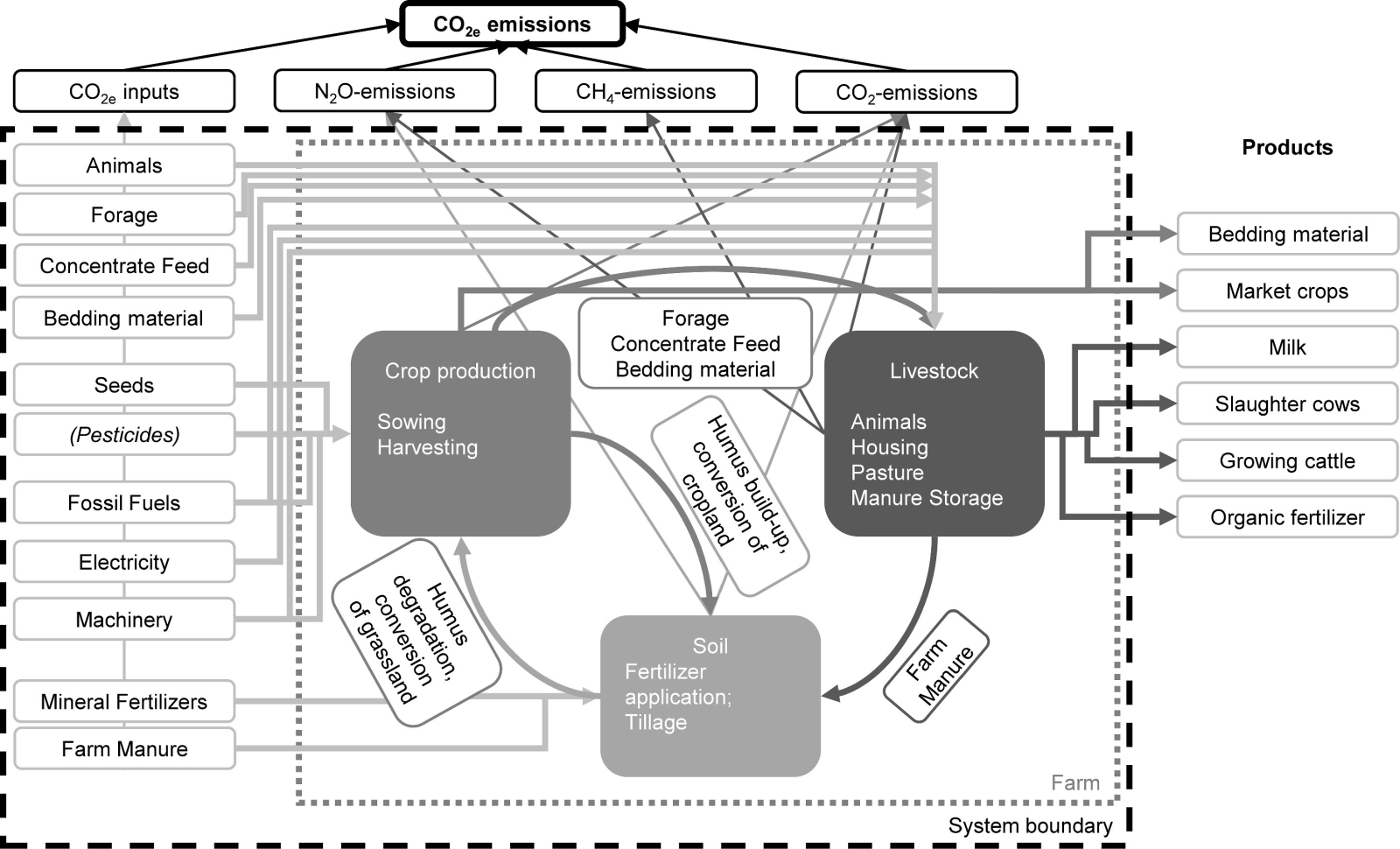April, 2023 | Environmental Challenges | Source |
Introduction:
Upstream greenhouse gas (GHG) emissions (i.e. scope 3)—accounting for 70–90% of the dairy industry’s total emissions—pose a persistent challenge due to data gaps and methodological complexity, often excluding them from corporate inventories. To address this, researchers from FiBL Austria and the Institute of Agroecology (Switzerland) developed a streamlined GHG calculation model using data from 26 Bavarian organic dairy farms, enabling efficient carbon accounting and targeted mitigation at the farm level.
Key findings:
The median corporate carbon footprint (CCF) across the study farms was 441.7 ton COâ‚‚e/year, while the product carbon footprint (PCF) averaged 0.90 kg COâ‚‚e/kg fat- and protein-corrected milk (FPCM). Enteric fermentation and manure management accounted for the majority of emissions (67.7% of CCF), followed by upstream emissions from energy, feed, and machinery. Mitigation potential varied widely, with individual farms capable of reducing emissions by 6.5 to 112.3 ton COâ‚‚e/year. Key mitigation measures included extending the productive life of dairy cows (up to 4.1% GHG reduction), reducing purchased concentrate feed (2.98%), and implementing undersown crops (2.75%). A simplified model reduced data inputs from 470 to 57 parameters without sacrificing accuracy—achieving a 99.7% correlation (R²) with the detailed model and a standard error of just 2.3% for total CCF. This tool could enable companies to monitor scope 3 emissions more effectively, evaluate mitigation outcomes, and scale climate action across their supplier base at lower cost and effort. Future work should focus on refining uncertainty estimates and broadening applicability to conventional systems.

Figure | System boundary for the detailed calculation model for the dairy farm corporate carbon footprint.





